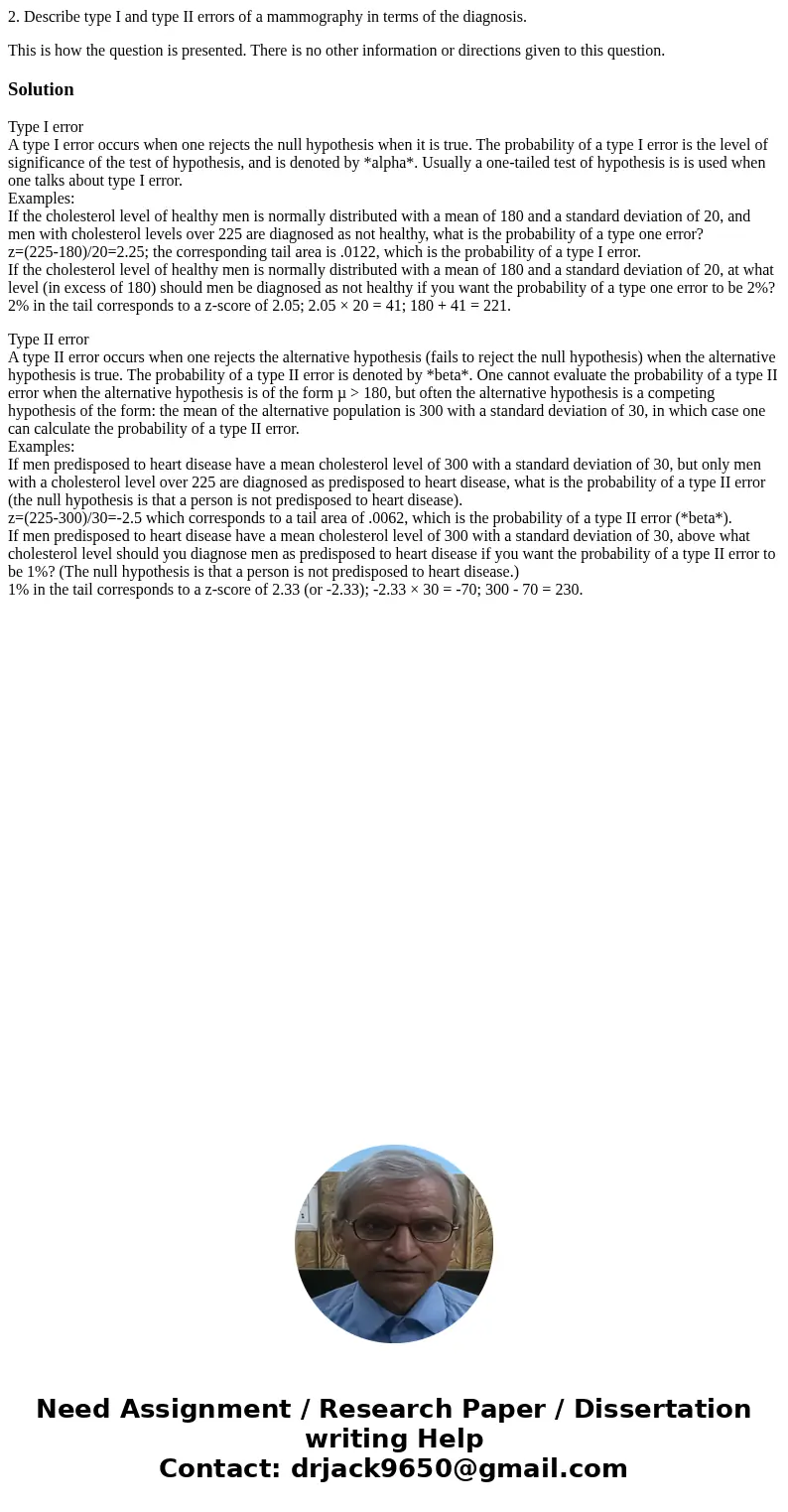2 Describe type I and type II errors of a mammography in ter
2. Describe type I and type II errors of a mammography in terms of the diagnosis.
This is how the question is presented. There is no other information or directions given to this question.
Solution
Type I error
A type I error occurs when one rejects the null hypothesis when it is true. The probability of a type I error is the level of significance of the test of hypothesis, and is denoted by *alpha*. Usually a one-tailed test of hypothesis is is used when one talks about type I error.
Examples:
If the cholesterol level of healthy men is normally distributed with a mean of 180 and a standard deviation of 20, and men with cholesterol levels over 225 are diagnosed as not healthy, what is the probability of a type one error?
z=(225-180)/20=2.25; the corresponding tail area is .0122, which is the probability of a type I error.
If the cholesterol level of healthy men is normally distributed with a mean of 180 and a standard deviation of 20, at what level (in excess of 180) should men be diagnosed as not healthy if you want the probability of a type one error to be 2%?
2% in the tail corresponds to a z-score of 2.05; 2.05 × 20 = 41; 180 + 41 = 221.
Type II error
A type II error occurs when one rejects the alternative hypothesis (fails to reject the null hypothesis) when the alternative hypothesis is true. The probability of a type II error is denoted by *beta*. One cannot evaluate the probability of a type II error when the alternative hypothesis is of the form µ > 180, but often the alternative hypothesis is a competing hypothesis of the form: the mean of the alternative population is 300 with a standard deviation of 30, in which case one can calculate the probability of a type II error.
Examples:
If men predisposed to heart disease have a mean cholesterol level of 300 with a standard deviation of 30, but only men with a cholesterol level over 225 are diagnosed as predisposed to heart disease, what is the probability of a type II error (the null hypothesis is that a person is not predisposed to heart disease).
z=(225-300)/30=-2.5 which corresponds to a tail area of .0062, which is the probability of a type II error (*beta*).
If men predisposed to heart disease have a mean cholesterol level of 300 with a standard deviation of 30, above what cholesterol level should you diagnose men as predisposed to heart disease if you want the probability of a type II error to be 1%? (The null hypothesis is that a person is not predisposed to heart disease.)
1% in the tail corresponds to a z-score of 2.33 (or -2.33); -2.33 × 30 = -70; 300 - 70 = 230.

 Homework Sourse
Homework Sourse